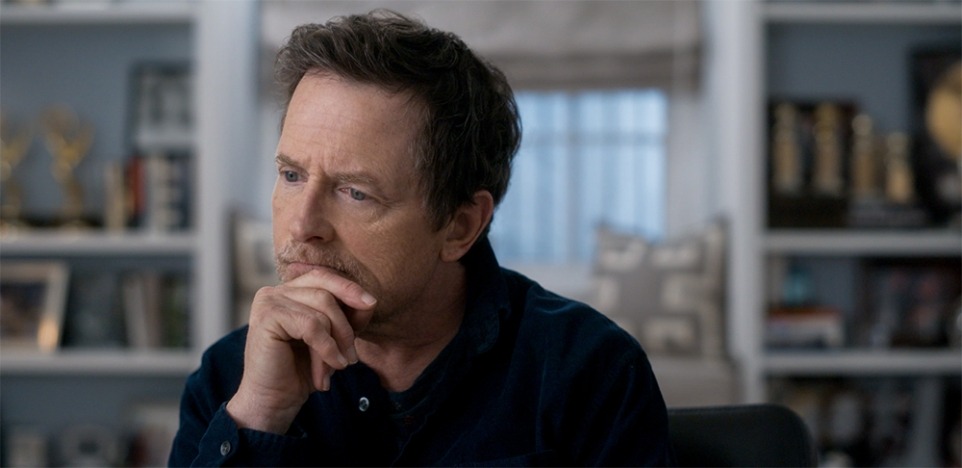Michael J. Fox remembers the exact moment when he realized that something was wrong with his body. Waking up with a hangover, he noticed a slight tremor in his little finger; it was almost as if the finger was not his. Just 29 years old, he was diagnosed with Parkinson’s Disease, a progressive, degenerative, and to date uncurable brain condition, a movement disorder with symptoms of tremors, an unsteady gait, slowed movement, a facial mask, and more. For Fox, the most persistent symptom was a tremor.
Davis Guggenheim, working closely with Michael J. Fox, has directed this documentary which chronicles Fox’s life from childhood to thee present, where he is a husband of 34 years and the father of four children. Archival film footage is mixed with clips from Fox’s television programs (Family Ties, Spin City) and movies (Back to the Future, Teen Wolf).
Sometimes the film clips are used to advance the narrative of Fox’s own life, taken from excerpts from his biographies. Family home movies show a hyper-active little boy. In school, he was bullied because he was so short. Having enjoyed drama class in high school, he went to Hollywood where he got some roles calling for a kid. He was penniless and about to abandon acting when he got the role of Alex in Family Ties. That and the movie Back to the Future – he filmed both the TV series and the movie at the same time – led to incredible success and popularity with fans. But, Fox admits, he almost lost himself in the party that became his life during that period.

His life was upended, and the documentary moves onto a deeper level, after his Parkinson’s diagnosis. For seven years, he hid his condition from everybody but his family. He used alcohol and even baths to try to run away from what he initially told a doctor was not supposed to happen to someone like him. When he announced via a press release that he had Parkinson’s, he found the public embraced him. He even began making jokes about his moving around so much on TV talk shows.
We see in these sections how his wife, Tracy Pollan, was a stabilizing and loving presence in Fox’s life. He describes her as a woman of clarity and no bullshit, and scenes of the family’s life are full of laughter and joy.
Pieces of a current-day interview with Fox increase the level of intimacy we feel as viewers. Fox is up-front about his difficulties and about how he has struggled to discover his true self. In a significant moment, he admits that whereas most people would say that Parkinson’s was an ending, he saw it as a beginning. Indeed, the Michael J. Fox Foundation devoted to research to find a cure for Parkinson’s is one of the best examples of scientific philanthropy.
One theme throughout this look into Fox’s life and work is his emphasis on movement, and he’s contemplated what it means for him to have a movement disorder condition. At the end of the film, he shares his thoughts on this with his son Sam:
“I’ve always been moving maybe because I’m small. I’ve counted on movement to not only propel me from place to place but to express myself as I propelled from place to place and to be who I am. But the thing that I learned was that I couldn’t be still in my life. I couldn’t be present in my life. Until I found this thing happened to me that made me present in every moment of my life because it was shaking me awake.”
This is an extraordinarily personal and inspiring portrait of a man who has used his condition as a catalyst for discovering who he could be and how much good he could do in the world.
